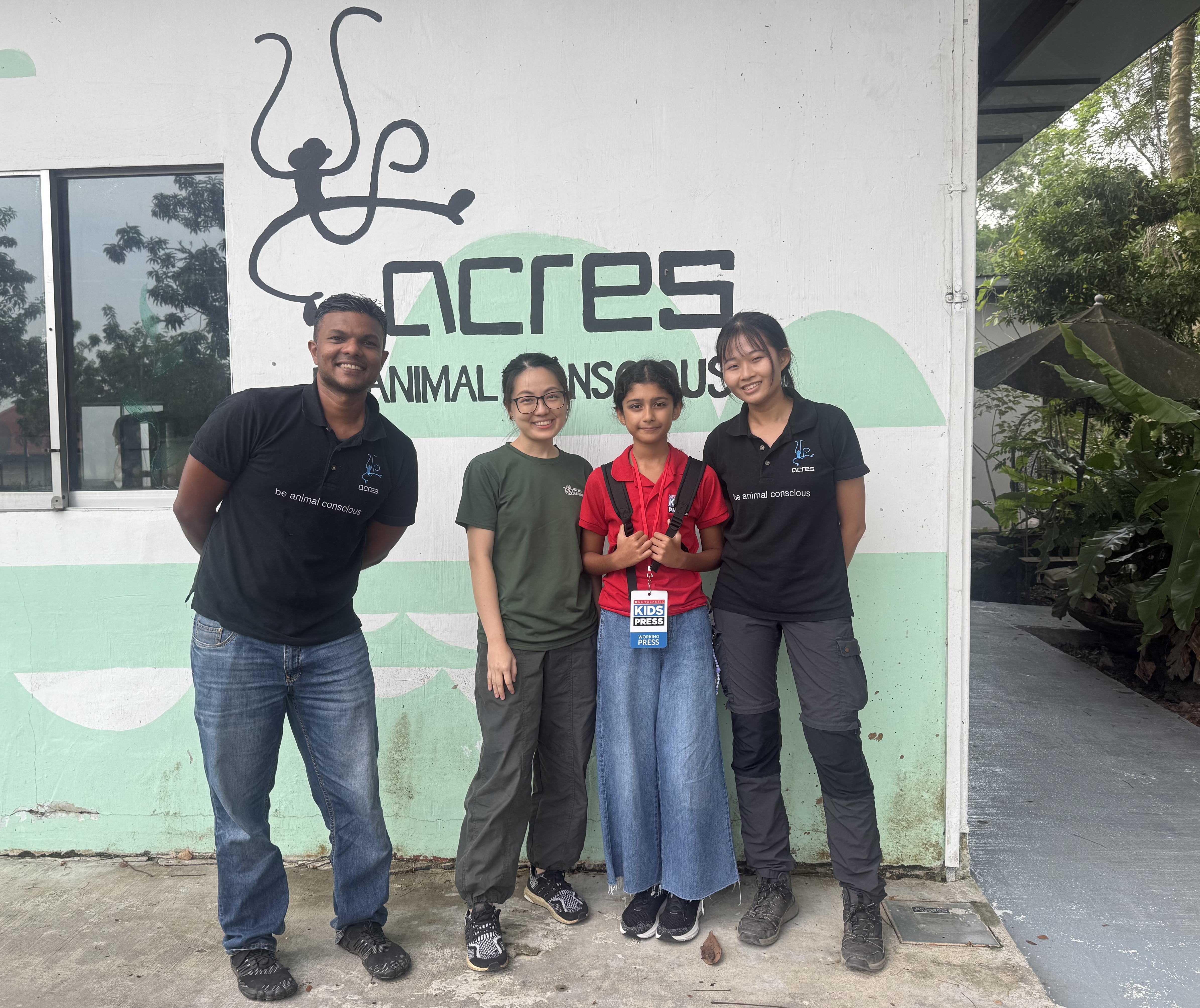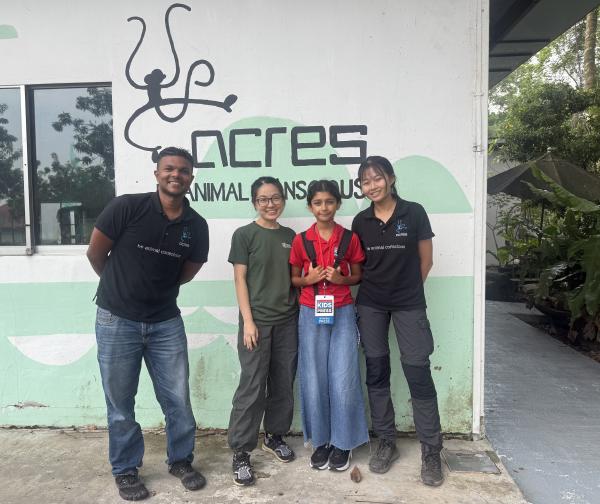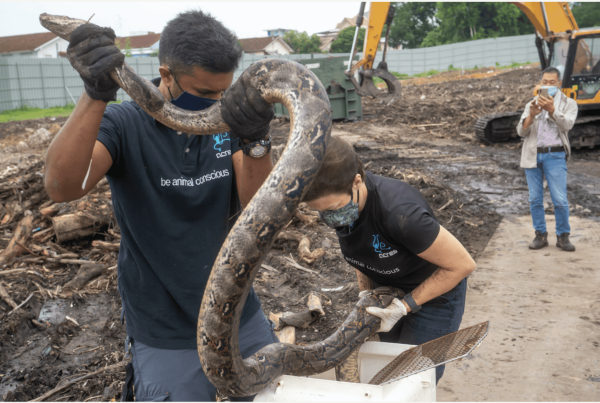KID REPORTERS’ NOTEBOOK
STEM Solutions help Singapore co-exist with wildlife to build a ‘City in Nature’


Scholastic Kid Reporter Rheya Agarwal photographed with ACRES staff
Did you know that a long time ago, Singapore was covered in swamps, lakes, and kampongs (small villages)? Even today, wildlife like boars, macaques and snakes still find their way to urban spaces in search of food and shelter. This can put them at risk, especially on busy streets.
Singapore is aiming to be a ‘City in Nature’ by 2030. The city is looking at ways it can restore and protect natural habitats. Scientists and experts are creating ways to help wildlife co-exist with humans and reconnect them with their natural habitats. Science, Technology, Engineering and Mathematics (STEM) plays a key role in these solutions.
Using STEM to build a safer city
Many animals cross highways into oncoming traffic. Experts use digital tools to help them decide where safer crossings are needed and to understand animal movement. This includes cameras and sonar repellers, which make unpleasant sounds to scare animals away. In 2013, the Mandai Wildlife Group (MWG) built a 140-metre-long bridge over the highway just for wildlife to cross. The footage from cameras on the bridge later revealed more than 100 wild species had used the bridge. MWG continues to use engineering to build fences along roads to guide animals and aerial rope bridges to help tree-dwelling animals move safely.

A snake being relocated to a safer area with ACRES rescue experts (photo credit: ACRES).
I spoke with Beth Carney, editorial director at Scholastic Magazines+, who shared more on the importance of early exposure to STEM and how SuperSTEM is engaging children. She said, “We feature ‘Cool STEM Jobs’ – such as a reptile scientist, coral-counting roboticists, and a vet technician for pets of people who are unhoused and a bat scientist.”
Beyond Singapore, there are many examples of how STEM can help animals. Carney shared, “In “Lending a Limb,” we featured the work of an engineer who designs artificial body parts for animals, such as a dog’s leg or an elephant’s foot. In “Bird on the Brink,” we told the story of scientists who create fake, high-tech eggs to help endangered birds.”
Engaging the community to understand animal behavior
Singapore is exploring ways that the community can help keep animals safe. Every month, Animal Concerns Research and Education Society (ACRES) gets more than 1,000 calls to rescue wild animals in urban areas. “Many times, we teach callers how to manage the situation themselves,” said Karina Lim, Wildlife Coordinator at ACRES. “It builds confidence and respect for animals.” Kiran Sujanani, a wildlife rescue expert at ACRES, added, “Wild animals are shy and often scared. If we give them space, they usually go away on their own.”
“To truly co-exist, we find out why they come towards us and how they behave,” explains Jasvic Victorina from ACRES. “Once we understand that, we teach people how to prevent them from coming and if they do, how to respond respectfully.” Animal welfare societies have been urging residents to do their part to avoid attracting wildlife to their homes. This includes not carrying plastic bags in monkey hot spots and keeping waste out of sight and reach.
“Education and raising awareness are the first steps in creating change. Harmony starts with respect,” said Carney. “By learning about animals and how we can respect their habitats, we can be a force for good in the world.” Singapore’s journey to a ‘City in Nature’ combines community and STEM-powered ideas to show that people and wildlife can share the same space.
